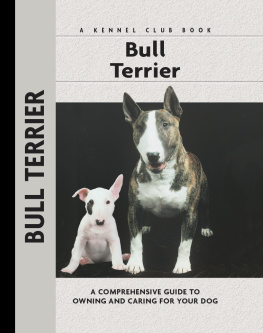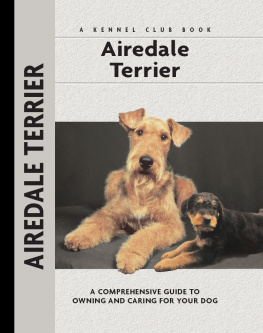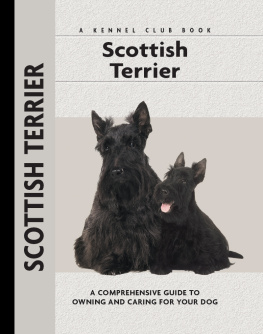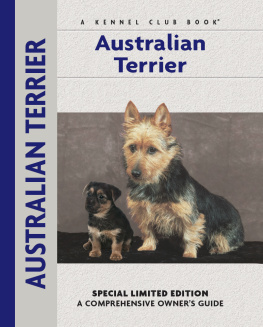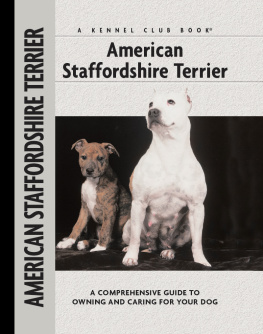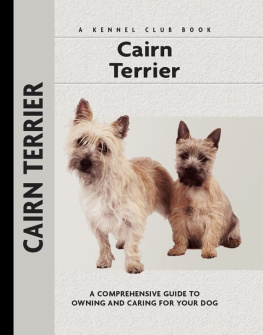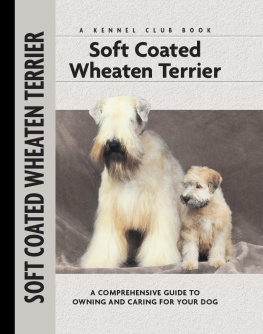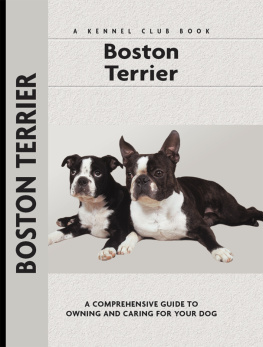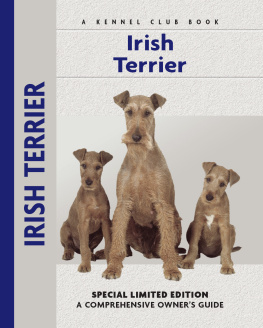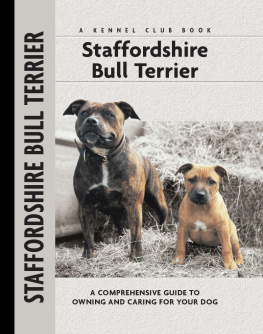Physical Characteristics of the Lakeland Terrier
(from the American Kennel Club breed standard)
Skull: Flat on top and moderately broad, the cheeks flat and smooth as possible. The stop is barely perceptible.
Head: Well balanced, rectangular, the length of skull equaling the length of the muzzle when measured from occiput to stop, and from stop to nose tip.
Ears: Small, V-shaped, their fold just above the top of the skull, the inner edge close to the side of the head, and the flap pointed toward the outside corner of the eye.

Eyes: Moderately small and somewhat oval in outline, are set squarely in the skull, fairly wide apart.
Nose: Black.
Muzzle: Strong with straight nose bridge and good fill-in beneath the eyes.
Neck: Long; refined but strong; clean at the throat; slightly arched, and widening gradually and smoothly into the shoulders. The withers are noticeably higher than the level of the back. The topline is short and level.
Size: Ideal height of the mature dog is 14.5 inches from the withers to the ground, with up to a one-half inch deviation either way permissible.
Forequarters: Shoulders are well angulated. The shoulder blade is long in proportion to the upper arm. The musculature of the shoulders is flat and smooth. The elbows are held close to the body, standing or moving. The forelegs are strong, clean and straight when viewed from the front or side.
Body: Strong and supple. The moderately narrow oval chest is deep, extending to the elbows. The loins are taut and short. There is moderate tuck-up.
Tail: Set high on the back. It is customarily docked so that when the dog is set up in show position, the tip of the tail is level with the occiput.
Hindquarters: Thighs are powerful and well muscled. The hind legs are well angulated. The stifles turn neither in nor out.
Coat: Two-ply or double, the outer coat is hard and wiry in texture, the undercoat is close to the skin and soft and should never overpower the wiry outer coat. The coat on the body is longer (about one-half to one inch) and may be slightly wavy or straight. The furnishings on the legs and foreface are plentiful as opposed to profuse and should be tidy.
Feet: Round and point forward, the toes compact and strong. Dewclaws are removed.
Color: Solid colors include blue, black, liver, red and wheaten.

Contents

Explore Englands harshly beautiful Lake District and meet the little terrier that was designed to hunt the creatures that dwell therein. Derived from the ancient Black and Tan Terrier as well as other extant British terriers, the Lakeland Terrier traces his origins to the late 19th century.

Meet the small athletic earthdog named for the Lake District where it originated. The Lakeland Terrier possesses many remarkable physical attributes and a strong constitution, as well as beguiling temperamental qualities, including his natural propensity toward mischief and reason.

Learn the requirements of a well-bred Lakeland Terrier by studying the description of the breed set forth in the American Kennel Club standard. Both show dogs and pets must possess key characteristics as outlined in the breed standard.
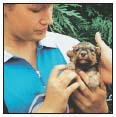
Find out about how to locate a well-bred Lakeland Terrier puppy. Discover which questions to ask the breeder and what to expect when visiting the litter. Prepare for your puppy-accessory shopping spree. Also discussed are home safety, the first trip to the vet, socialization and solving basic puppy problems.
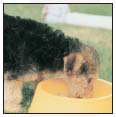
Cover the specifics of taking care of your Lakeland Terrier every day: feeding for the puppy, adult and senior dog; grooming, including coat care, ears, eyes, nails, teeth and bathing; and exercise needs for your dog. Also discussed are the essentials of dog ID.

Begin with the basics of training the puppy and adult dog. Learn the principles of house-training the Lakeland Terrier, including the use of crates and basic scent instincts. Enter puppy kindergarten and introduce the pup to his collar and leash, and progress to the basic commands. Find out about obedience classes and other activities.

By Lowell Ackerman DVM, DACVD
Become your dogs healthcare advocate and a well-educated canine keeper. Select a skilled and able veterinarian. Discuss pet insurance, vaccinations and infectious diseases, the neuter/spay decision and a sensible, effective plan for parasite control, including fleas, ticks and worms.

Know when to consider your Lakeland Terrier a senior and what special needs he will have. Learn to recognize the signs of aging in terms of physical and behavioral traits and what your vet can do to optimize your dogs golden years. Consider some advice about saying goodbye to your beloved pet.
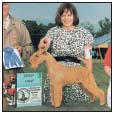
Step into the center ring and find out about the world of showing pure-bred dogs. Heres how to get started in AKC shows, how they are organized and whats required for your dog to become a champion. Take a leap into the realms of obedience trials, agility trials and earthdog events.
K ENNEL C LUB B OOKS L AKELAND T ERRIER
ISBN 13: 978-1-59378-317-4
eISBN 13: 978-1-62187-030-2
Copyright 2005 Kennel Club Books An Imprint of I-5 Press A Division of I-5 Publishing, LLC
3 Burroughs, Irvine, CA 92618 USA
Cover Design Patented: US 6,435,559 B2 Printed in South Korea
All rights reserved. No part of this book may be reproduced in any form, by photostat, scanner, microfilm, xerography or any other means, or incorporated into any information retrieval system, electronic or mechanical, without the written permission of the copyright owner.
10 9 8 7 6 5 4 3 2 1
Photography by Michael Trafford
with additional photographs by:
Paulette Braun, T.J. Calhoun, Isabelle Franais, Gay Glazbrook, Carol Ann Johnson, Bill Jonas, B. W. Kernan and Chuck Tatham.
Illustrations by Patricia Peters.
Next page






